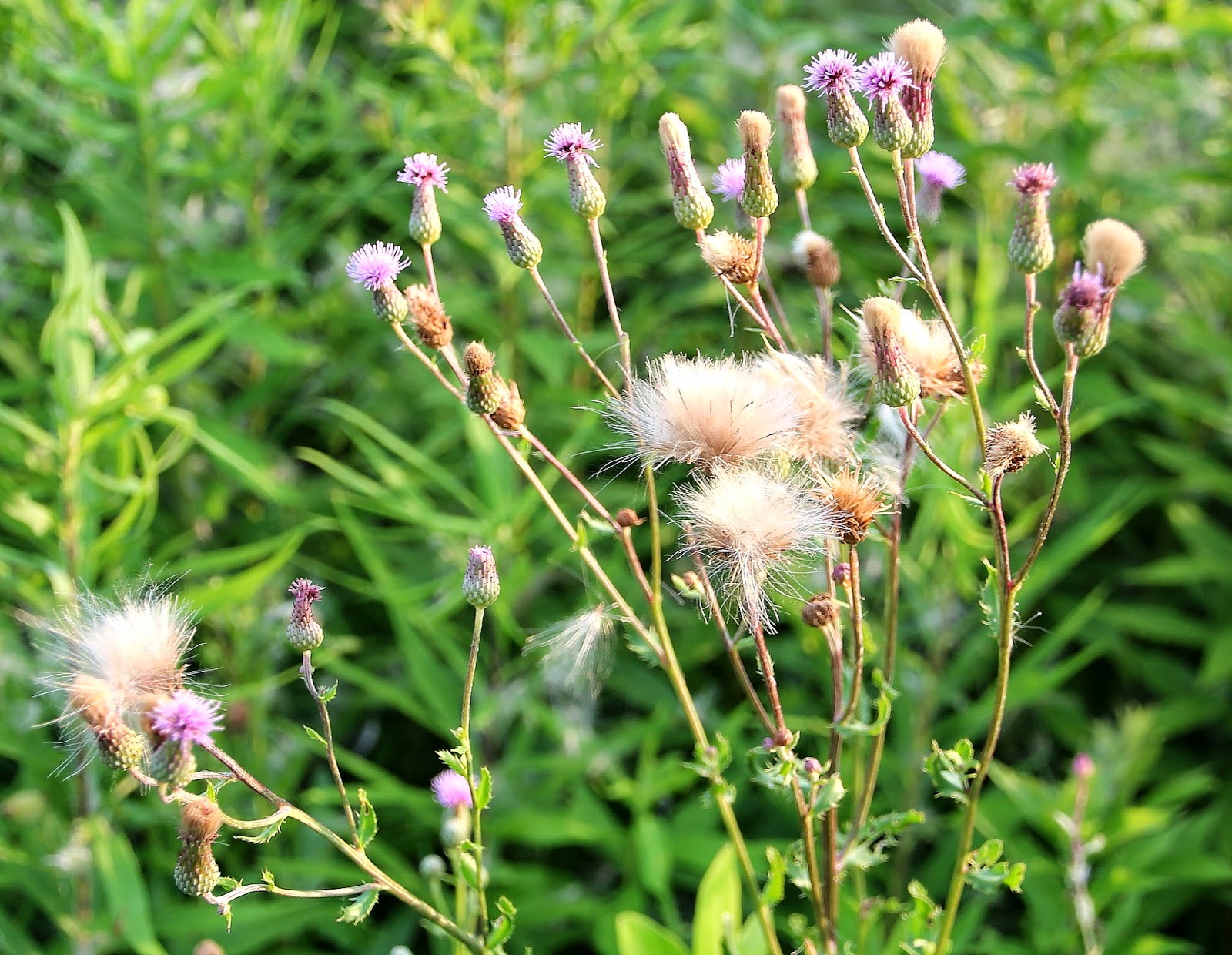 |
| Between a pasture and a crop circle |
Well, it turns out we didn't do everything right. Grassland managers all along the East Coast have come to realize that the birds are seeking diversity - diversity in height and diversity in plant composition. To the birds, our grasslands are too dense, too tall, and too monotonous, and they don't provide food (i.e., insects) in sufficient quantities for nestlings.
So, you might recommend that we diversify the grasslands, and you'd be right. However, we also have a terrible problem with invasive plants. The grasses can be treated with special herbicides that kill all invasive plants except the grasses, but there's no such "magic bullet" for diverse combinations of plants. Once invasive plants colonize a mixed-vegetation meadow, control becomes much more time consuming and costly because the invasive plants have to be removed "surgically" without disturbing the desirable plants. We've resisted trying to diversify our grasslands for that reason.
But, we've finally come to the realization that (1) we're not going to attract meadow-nesting birds if we don't do something different, and (2) if we can't attract meadow-nesting birds, why have the grasses at all because our landscape really wants to be a forest and we have to fight Mother Nature (i.e., natural succession) to keep it in grassland.
Fortuitously, I recently ran into Roger Latham, a respected field ecologist. Roger and I are good friends, and he has visited Pennypack to consult on several occasions. He also served on the board of directors of the Natural Lands Trust (NLT), which has preserves all over southeastern Pennsylvania and southern New Jersey. He told me that NLT's Gwynedd Wildlife Preserve near Ambler had had Eastern Meadowlarks nesting in its native grasslands this summer, and he suggested that I talk to Gwynedd's land manager for some guidance. So, I rounded-up Pennypack's senior stewardship staff for a field trip and we paid a visit to Gwynedd on October 30.
 |
| Edge of the "crop circle" (darker foreground), native grassland (tawny center) and pasture (green, far left) |
 |
| Diverse crop circle vegetation (foreground) |
 |
| Crop circle (foreground), native grasslands (mid-ground), and woodland (background) |
 |
| Crop circle (right) and native grassland (left) |
Executive Director

























